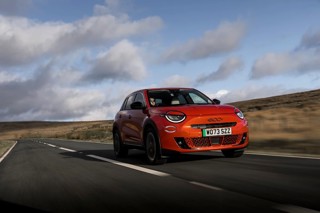Curiously this target has been announced at the same time as the Croma upper medium car is being launched – is Fiat UK is tacitly telling Italy to forget about Croma sales in this country?
But what of the other carmakers? Looking at the table, there seems to be some correlation between the strength of the brand and the ability to spread sales across segments.
Of the mainstream brands, VW has the smallest proportion of small car sales thanks to Golf and surprisingly strong Passat. Ford and Vauxhall are mirror images of each other, although there are differences at the small end. Whereas the Ka is effectively the entry-level Fiesta, Vauxhall gets nearly all its sales from the Corsa, with the Agila as an afterthought.
The biggest cause for concern is Peugeot – more than half its sales come from the ageing 206. So far Peugeot profits have held up remarkably well because the 206 is churned out in such huge numbers: more than 500,000 get produced each year.
However, the company cannot afford to depend on one model as Fiat once did with the Uno and then the Punto – leaning on a single model can be a recipe for trouble if that model falls out of favour.
The 407 has not performed brilliantly and Peugeot is leaving compact MPVs to Citroen, which leaves it a bit thin in the mid-market.
The remarkable thing is how concentrated are today’s mass carmakers. Despite the talk of niche products, both Ford and Vauxhall get more than 95% of their sales from small and medium models.
In other segments, Ford has the Galaxy and Vauxhall has the Tigra – and that is about it. While the premium brands expand their ranges (BMW X3/1-series, Audi Q7, Mercedes B- and R-class), the volume brands seem to be penned in ever more tightly.
What to do about this is one of the major problems for the car companies. Leaping into unrelated segments is not the answer, nor is buying in off-roaders and then reselling them at optimistic prices. Either the volume manufacturers have to enter new segments with competitive products (as Toyota did with the RAV-4) or spread their existing platforms further.
Ford and Vauxhall seem to have been late in realising this: Ford never even got the hot hatch versions of the Mk I Focus sorted out, let alone the MPV and Cabrio derivatives. With the Mk II, it has learned its lessons and the range is set to broaden considerably.
This will increase: if a volume brand is being restricted to three or four segments, it has to have to cover every aspect of those sectors.


















Login to comment
Comments
No comments have been made yet.